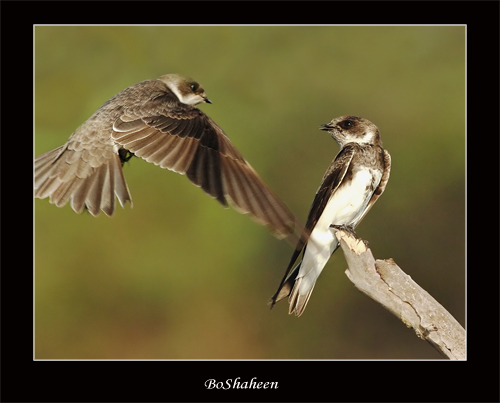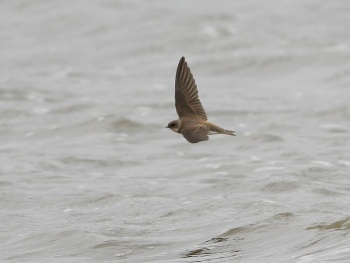(Image first) |
(→External Links: G Search amended. Seems to be working, so Niels work-arounds deleted) |
||
| Line 23: | Line 23: | ||
==External Links== | ==External Links== | ||
| − | {{GSearch| | + | {{GSearch|Riparia_riparia}} |
| − | |||
| − | |||
<br /> | <br /> | ||
{{Video|Sand_Martin}} | {{Video|Sand_Martin}} | ||
[[Category:Birds]][[Category:Riparia]][[Category:Bird Songs]][[Category:Videos]] | [[Category:Birds]][[Category:Riparia]][[Category:Bird Songs]][[Category:Videos]] | ||
Revision as of 08:47, 28 March 2009
Alternative names: Collared Sand Martin; Bank Swallow
- Riparia riparia
Identification
Length 12-13 cm. Sand-brown upperparts and white underparts with a brown breast band. Forked tail. The bill and legs are black-brown.
Juveniles birds have pale fringes to their back feathers and the breast band is less distinct.
Distribution
Breeds in most of the northern hemisphere, wintering to Africa, southern Asia and South America.
Taxonomy
Five to six subspecies are recognized: riparia, ijimae, shelleyi, eilata, and innominata are widely recognized, taczanowskii only by some authorities. Pale Sand Martin has been split from the present species.
Habitat
Riverbanks, lakesides and sandpits.
Behaviour
Diet
The diet includes insects, such as flies and spiders that are caught in flight.
Breeding
They nest in colonies, burrowing into banks, quarries and cliffs, and usually near water. The nest burrow is built by both parents; the nest chamber is lined with plant material and feathers. The eggs are white, smooth and glossy, and are incubated by both parents and both parents feed the young.
Vocalisation
<flashmp3>Riparia riparia (song).mp3</flashmp3>
Listen in an external program
External Links





